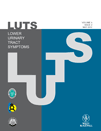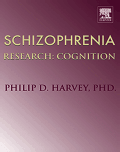
Epilepsy & Behavior Reports
Scope & Guideline
Advancing Knowledge in Epilepsy and Behavioral Science
Introduction
Aims and Scopes
- Clinical Management of Epilepsy:
The journal emphasizes research on the clinical management strategies for epilepsy, including pharmacological interventions, surgical options, and novel treatment modalities. - Comorbidities and Psychosocial Aspects:
It explores the relationship between epilepsy and various comorbid conditions such as psychiatric disorders and cognitive impairments, highlighting the need for comprehensive care. - Innovative Therapeutic Approaches:
There is a focus on emerging therapies, including neuromodulation techniques, dietary interventions, and pharmacogenomics, offering insights into personalized medicine for epilepsy patients. - Neurobiological Mechanisms:
Research on the underlying neurobiological mechanisms of epilepsy is prevalent, including studies on genetic, structural, and functional aspects of epilepsy. - Patient-Centered Research:
The journal promotes studies that incorporate patient perspectives, quality of life assessments, and the impact of epilepsy on daily functioning. - Technological Advances in Diagnosis and Treatment:
It showcases advancements in diagnostic techniques such as EEG and neuroimaging, as well as the application of artificial intelligence and telehealth in managing epilepsy.
Trending and Emerging
- Telemedicine and Remote Monitoring:
The integration of telemedicine in epilepsy management has gained traction, particularly in the context of the COVID-19 pandemic, showcasing the importance of remote consultations and monitoring. - Psychosocial Impact and Quality of Life:
There is an increasing focus on the psychosocial dimensions of epilepsy, including studies on anxiety, depression, and the overall quality of life of patients, which emphasize holistic approaches to care. - Comorbid Conditions and Multidisciplinary Care:
Research on the interplay between epilepsy and comorbidities, such as ADHD and psychiatric disorders, is becoming more prominent, underscoring the need for multidisciplinary treatment strategies. - Advanced Neurostimulation Techniques:
Emerging studies on advanced neurostimulation techniques, including deep brain stimulation and vagus nerve stimulation, are gaining attention as potential treatment options for drug-resistant epilepsy. - Genetic and Molecular Insights:
The exploration of genetic factors and molecular mechanisms underlying epilepsy is trending, reflecting a shift towards understanding individual variability in treatment responses. - Patient Engagement and Shared Decision-Making:
Research focusing on patient preferences, engagement in treatment decisions, and shared decision-making processes is on the rise, highlighting the importance of patient-centered care.
Declining or Waning
- Traditional Pharmacological Studies:
There is a noticeable decrease in studies solely focused on traditional antiseizure medications, possibly due to the increasing emphasis on personalized medicine and novel therapies. - Basic Science Research on Epileptogenesis:
Research purely focused on the basic science of epileptogenesis has waned, as the journal increasingly prioritizes translational studies that connect basic science to clinical applications. - Single Case Reports:
The prevalence of isolated case reports seems to be declining, with a shift towards larger cohort studies and multicenter trials that provide more robust data. - Epidemiological Studies without Intervention Focus:
Epidemiological studies that do not explore intervention strategies or patient outcomes are less frequent, indicating a trend towards studies that aim for actionable insights.
Similar Journals

Current Journal of Neurology
Fostering global insights in neurology and clinical care.Current Journal of Neurology, published by Tehran University of Medical Sciences, is an esteemed Open Access journal dedicated to advancing the field of neurology. Since its inception in 2011, the journal has provided a platform for innovative research and critical discourse in neurology and clinical neurology, with a focus on the latest advancements and methodologies. Although the journal currently holds a Q4 quartile ranking in both neurology and clinical neurology, its goal is to foster the global dissemination of knowledge and ideas relevant to the complexities of neurological disorders. Researchers, professionals, and students exploring this dynamic field will find valuable insights, as the journal aims to bridge the gap between emerging research and clinical application. Based in Tehran, Iran, the Current Journal of Neurology welcomes contributions that enhance understanding and treatment of neurological conditions, thereby promoting evidence-based practices across the globe.

EUROPEAN JOURNAL OF PAEDIATRIC NEUROLOGY
Shaping the future of pediatric neurological care.European Journal of Paediatric Neurology, published by Elsevier Science Ltd, is a premier academic journal dedicated to advancing the field of paediatric neurology. With its ISSN 1090-3798 and E-ISSN 1532-2130, this journal serves as a vital resource for researchers, clinicians, and students alike, focusing on the latest findings and innovative treatments in paediatric neurological disorders. The journal has established itself as a leading publication in its field, achieving a Q1 classification in Pediatrics, Perinatology and Child Health, and holding a reputable Q2 status in Clinical Neurology as of 2023. Positioned within the top 88th percentile in Pediatrics and the 76th percentile in Clinical Neurology according to Scopus ranks, it publishes rigorous peer-reviewed articles that contribute significantly to clinical practice and research. Although not open access, the journal provides vital insights into the complexities of neurological conditions affecting the pediatric population, making it an essential tool for scholars and professionals striving to improve child health outcomes. With a publication trajectory spanning from 1997 to 2024, it continues to be at the forefront of paediatric neurological research, inspiring innovation and collaboration in the scientific community.

LUTS-Lower Urinary Tract Symptoms
Advancing urological insights for better patient care.LUTS - Lower Urinary Tract Symptoms is a leading peer-reviewed journal published by Wiley, dedicated to advancing the field of urology and neurology with a special focus on lower urinary tract dysfunctions. Since its inception in 2010, the journal has established itself as an essential resource for researchers and practitioners, featuring cutting-edge research articles, reviews, and clinical studies that explore the complexities of lower urinary tract symptoms and their neurological implications. Housed in Japan, LUTS occupies an important niche in the academic landscape, currently ranked Q2 in Urology and Q3 in Neurology, and holding notable Scopus ranks within both fields. The journal serves as a platform for disseminating innovative ideas and fostering collaborative efforts among experts, making significant contributions to improve patient care and outcomes. With its commitment to high-quality scholarship, LUTS is an indispensable tool for those seeking to stay at the forefront of research in urology and neuroscience.

Cognitive and Behavioral Neurology
Pioneering Research for Enhanced Patient OutcomesCognitive and Behavioral Neurology is a prominent peer-reviewed journal dedicated to advancing the understanding of cognitive and behavioral aspects of neurological disorders. Published by Lippincott Williams & Wilkins, this journal has established itself as a vital resource for researchers, clinicians, and students in the fields of cognitive neuroscience, neuropsychology, and psychiatry. With an ISSN of 1543-3633 and an E-ISSN of 1543-3641, it offers a robust platform for the dissemination of high-quality research, as evidenced by its positioning in the Q3 quartiles across various categories, including Cognitive Neuroscience and Psychiatry. The journal, which has been actively publishing since 2003, encourages innovative studies that explore the intersection of cognition and behavior in neurological contexts. As a vital contributor to the academic dialogue on these topics, it provides an essential archive of findings and discussions that inform clinical practice and educational approaches, reflecting its commitment to improving patient outcomes and enhancing neurological science.

Archives of Epilepsy
Fostering collaboration for better epilepsy management.Archives of Epilepsy is a pioneering academic journal dedicated to advancing the field of epilepsy research and clinical practice. Published by GALENOS PUBL HOUSE in Turkey, this Open Access journal has embraced the principle of unrestricted access since its inception in 2012, allowing researchers, healthcare professionals, and students from around the world to engage with cutting-edge findings in neuropathology. With a focus on clinical and neuroscience aspects of neurology, the journal occupies a significant position in the academic landscape, currently ranked in the Q4 quartile in both Neurology and Clinical Neurology categories as of 2023. Though it faces challenges in its Scopus rankings with a current percentile of 2nd in Medicine - Neurology (Clinical) and 1st in Neuroscience - Neurology, it offers a valuable platform for emerging studies. The journal's commitment to fostering a comprehensive understanding of epilepsy is crucial, as it facilitates broader discourse on effective treatments and patient care strategies. We invite researchers and practitioners to explore the impactful articles published in the Archives of Epilepsy and contribute to an evolving dialogue that strives to improve outcomes for individuals affected by epilepsy.

Ideggyogyaszati Szemle-Clinical Neuroscience
Advancing the Frontiers of Clinical NeuroscienceIdeggyogyaszati Szemle-Clinical Neuroscience, an esteemed publication under the auspices of LITERATURA MEDICA, serves as a pivotal platform in the field of neurology and clinical neuroscience. Established in Hungary, this journal has been committed to advancing the understanding of neurological disorders and treatments since its inception. With its ISSN 0019-1442 and E-ISSN 2498-6208, it provides a unique local perspective alongside valuable contributions to the global discourse in neuroscience. Despite earning a Q4 quartile ranking in both Neurology and Clinical Neurology, the journal remains dedicated to publishing high-quality research that contributes to the scientific community's collective knowledge. Its coverage spans significant converged years from 1954 to 1985 and now continues through 2024, reflecting a rich historical foundation. Recognizing the importance of open access, the journal strives to enhance accessibility, albeit currently lacking a formal open-access model. Researchers, professionals, and students in the field will find in Ideggyogyaszati Szemle a resource vital for keeping abreast of emerging trends and findings in neurological science.

EPILEPSIA
Advancing epilepsy research since 1909.EPILEPSIA is a premier academic journal published by Wiley, with a storied history dating back to 1909, making it a cornerstone in the field of epilepsy research and neurology. With an impressive impact factor reflecting its robust contribution to the academic community, EPILEPSIA is categorized in the top quartile (Q1) in both neurology and clinical neurology as of 2023, underscoring its significance and prestige. The journal is ranked #15 out of 192 in Neuroscience & Neurology and #34 out of 400 in Medicine & Neurology (clinical) within Scopus, indicating its essential role in advancing knowledge and treatments related to epilepsy. Researchers and clinicians are encouraged to contribute groundbreaking studies, case reports, and reviews that inform best practices and improve patient outcomes. Although EPILEPSIA currently does not offer open access options, its detailed exploration of both fundamental and clinical aspects of epilepsy ensures wide dissemination of crucial findings among professionals and students alike, furthering the understanding and management of this complex condition.

Multiple Sclerosis Journal
Advancing the Frontiers of Multiple Sclerosis ResearchMultiple Sclerosis Journal, published by SAGE Publications Ltd, is a leading academic journal in the fields of neurology and clinical neurology, with an impressive impact factor reflecting its critical role in neurological research. Established in 1995 and continuing to 2024, this journal has positioned itself as a premier platform for disseminating innovative and impactful research related to multiple sclerosis, thereby contributing significantly to both clinical practice and scientific advancements in the field. The journal's robust standing is evidenced by its Q1 category rankings, placing it in the top tier of both Neuroscience (Rank #16/192, 91st Percentile) and Clinical Neurology (Rank #35/400, 91st Percentile) categories, making it an essential resource for researchers, healthcare professionals, and students alike. The journal focuses on a wide array of topics, including basic research, clinical trials, and treatment methodologies, ensuring that its readership is well-informed about the latest developments and trends. Access to its articles is through subscription, fostering a reputable environment for quality research dissemination.

Brain Communications
Exploring the Frontiers of Brain ResearchBrain Communications is an esteemed, open-access academic journal published by Oxford University Press since 2019, focusing on the dynamic field of neuroscience. With a dedicated ISSN and an E-ISSN of 2632-1297, this journal aims to address the intricate relationships between brain functions, psychiatric disorders, and neurobiological mechanisms. The journal stands out in the academic realm, holding a prestigious Q1 ranking across several categories, including Biological Psychiatry, Cellular and Molecular Neuroscience, Neurology, and Psychiatry and Mental Health for 2023. Notably, it has also secured impressive Scopus ranks in various neuroscience and psychiatry fields, evidencing its commitment to high-quality research. With an impact factor reflective of its growing influence, Brain Communications provides accessible research findings to professionals, researchers, and students alike, fostering a deeper understanding of complex neurological phenomena. This innovative journal is pivotal for anyone involved in advancing knowledge in neuroscience and mental health.

Schizophrenia Research-Cognition
Advancing understanding in schizophrenia cognition.Schizophrenia Research-Cognition is an esteemed journal dedicated to advancing the understanding of cognitive aspects of schizophrenia and related mental health disorders. Published by Elsevier, this Open Access journal has been a pivotal platform since its inception in 2014, facilitating the dissemination of high-quality research findings to a global audience. With a notable impact factor and categorized in the Q2 quartile for both Cognitive Neuroscience and Psychiatry and Mental Health, it ranks among the top journals in these fields, currently positioned at #171 out of 567 in Psychiatry and at #40 out of 115 in Cognitive Neuroscience according to Scopus metrics. Located in the United States, and published under the auspices of Elsevier, the journal aims to provide an insightful forum for researchers, clinicians, and students interested in the cognitive underpinnings of schizophrenia, promoting innovative research that bridges the gap between cognitive neuroscience and clinical application. Schizophrenia Research-Cognition's commitment to open access ensures wide-reaching impact and engagement from the research community and beyond.